
| KIT: | Hasegawa 1/48 Hurricane I "South African Air Force" |
| KIT #: | 09592 |
| PRICE: | $30.00 |
| DECALS: | Two options |
| REVIEWER: | Sinuhe Hahn with Piet Van Schalkwyk and Erik Whipple |
| NOTES: | 'Kits at War' sheet 4/11 used. Colour scheme is subject to interpretation. |

| HISTORY |
The Hawker Hurricane saw extensive service with the SAAF, being used pre-war, operationally during WW2, and as trainer following cessation of hostilities. The first MkI Hurricanes were delivered in February 1939, arriving by ship at Durban for the UK. These were old ex-RAF machines, and were probably of the fabric wing variety, having a Watts Z.38 two blade propeller, round windscreen without armour panel and a rather primitive ring and bead site on the cowling. They were apparently not in the best condition, and stories exist of the ground crew having to remove several birds nests in order to get the “new aircraft” airworthy.
 When war was declared in 1939 the SAAF had
six of these fighters on strength, of which two crashed (one fatally) in
exercises in the first few days following South Africa’s entry into the new war.
One of these aircraft, 276, was salvaged and later sent up to Nairobi in Kenya,
for use as spares. As such, 4 monoplane fighters remained to defend the country.
When war was declared in 1939 the SAAF had
six of these fighters on strength, of which two crashed (one fatally) in
exercises in the first few days following South Africa’s entry into the new war.
One of these aircraft, 276, was salvaged and later sent up to Nairobi in Kenya,
for use as spares. As such, 4 monoplane fighters remained to defend the country.
Although war in Africa had not yet broken out it was clear to the leadership in South Africa, then under Gen. Jan Smuts, that Italy would not long refrain from entering the fray. Consequently the SAAF set about the acquisition of new fighter aircraft. The consultations with the British resulted in an offer of a number of obsolete biplanes in the form of 18 Gloster Gladiators, 32 Gloster Gauntlets and 22 worn out Hawker Furies. Discussion with the US, and after the British relented, resulted in the acquisition of a small number of P-36 “Hawk 75’s” which had previously been deemed for the French Air Force. With these aircraft at hand, the SAAF went to war against the vastly superior Italian forces in East Africa in 1940.
SAAF Hurricanes in East Africa: After
training on Gauntlets in Egypt, 1 Squadron SAAF (the only SAAF fighter squadron
at that time) started ferrying down Gladiators to Nairobi. In the interim the
remaining 4 SAAF Hurricanes were flown up from South Africa. On 19 June 1940,
the SAAF flew its first operational fighter mission against the Italian forces
in 2 Hurricanes (piloted by Capt. Truter and 2nd.Lt. Griffiths)
escorting a flight of 3 Ju 86 bombers (converted from South African Airways
civilian aircraft) from 12 Squadron. The target was an airfield in Yawello,
south west Abyssinia. Arriving to find the target apparently deserted, they were
suddenly pounced upon by a flight of Fiat Cr 32s. Although Capt. Truter managed
to damage (or destroy) one of the Fiats, the dog fight was far from one sided,
and Lt. Griffiths failed to return, his aircraft plummeting at high speed into
the ground. And so the 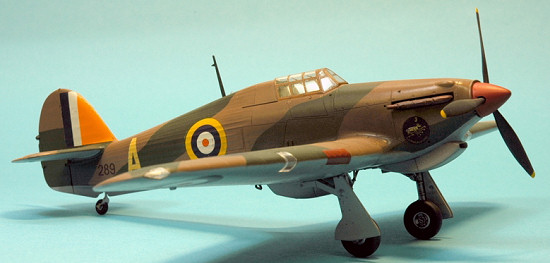 SAAF drew first blood (several Caproni Ca 133 bombers
were destroyed on the ground by the Ju 86’s), and lost one of its own (and
another one of its precious Hurricanes!!). In a bitter and hard “War of a 100
Days”, the South Africans did finally manage to overcome the Italian forces in
1941. Much of this was accomplished with a speed similar to the Blitzkrieg used
by the Germans in Europe: An example is the advance against Addis Ababa where a
distance of 1370 miles (2192 km) was covered in only 50 days. No wonder the
Commander on the Imperial Force, Lt.Gen. Alan Cunningham is quoted as saying
“give me mobility, and you can have a 1000 bayonets”.
SAAF drew first blood (several Caproni Ca 133 bombers
were destroyed on the ground by the Ju 86’s), and lost one of its own (and
another one of its precious Hurricanes!!). In a bitter and hard “War of a 100
Days”, the South Africans did finally manage to overcome the Italian forces in
1941. Much of this was accomplished with a speed similar to the Blitzkrieg used
by the Germans in Europe: An example is the advance against Addis Ababa where a
distance of 1370 miles (2192 km) was covered in only 50 days. No wonder the
Commander on the Imperial Force, Lt.Gen. Alan Cunningham is quoted as saying
“give me mobility, and you can have a 1000 bayonets”.
Of note is that much of this action saw extensive use being made of biplanes by both sides: the SAAF using Hawker Furies, Gloster Gladiators and Hawker Hartebeests (a Hart derivative), the Italians using Fiat Cr 32 and 42’s. This fact is frequently forgotten, and unfortunately the war in East Africa is rarely mentioned in histories of WW2. Many of these battles saw extraordinary degrees of heroism on the part of South Africans, and contrary to opinion, a great degree of resistance and sacrifice by the Italians. One example is the single handed combat of Maj. Schalk van Schalkwyk, OC of 1 Sqn, in a Gladiator against eight Fiat Cr 42’s from 412a Squadriglia. Despite Capt. “Piggy” Boyle rushing to his aid in another Gladiator, Maj. van Schalkwyk was shot down and died of his wounds.
That the SAAF did play an important part
in this campaign is apparent in an independent appraisal by an American
observer, HD Blauveldt, who commented “one SAAF squadron with only 9 hurricanes
destroyed over 100 enemy planes, countless trucks, automobiles, transports and
trains while operating makeshift desert airfields”. Not a bad effort for a
fledgling air force with no combat experience.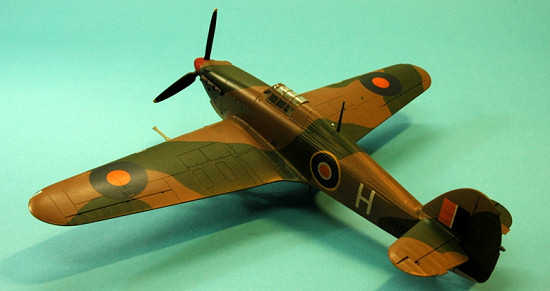
Jack Frost in East Africa: One of the most famous members of the SAAF during the campaign in East Africa and the subsequent war in North Africa was John Everett “Jack” Frost. Jack was born in Queenstown in 1918 (for those familiar with SA’can geography, “Pat” Pattle was born in not too distant Butterworth) and joined the SAAF in 1936. His skill as a leader was soon noted and by 1940 he was promoted to Captain and Flight Commander with 3 Squadron flying Hurricanes. Late in 1940 the unit was transferred to Kenya, where it participated in allied attacks into neighbouring Abyssinia and Somaliland. His first “kill” took place when he destroyed a Caproni Ca 133 on the ground at Afmadu. On the next day he saw “real” action, when he intercepted a flight of three Caproni Ca 133’s which were busy bombing the Transvaal Scottish division near Dif. In the ensuing mêlée, he shot down one of the Fiat Cr42’s which came to the aid of the Caproni’s, as well as all three bombers. For this action he was awarded an immediate DFC.
On 15 March 1941 a rather remarkable event happened, in which Jack palyed a major part, but is not the real “hero”. Following several attacks by Italian SM 79 bombers on their bases, the SAAF set out to destroy the enemy base at Diredawa. In their first attack, conducted early that morning, the SAAF gaggle consisting of Hurricanes and Ju 86’s, was intercepted by three Italian Fiat Cr 32’s. Although it is not clear if all three these enemy fighters were truly “shot down”, or managed to crash land, Frost was credited with the destruction of one, a further one was claimed by Capt. Theron, and the destruction of one shared by Morley and Venter. Having cleared the air of enemy aircraft, the SAAF Hurricanes set about strafing the remaining aircraft on the ground, destroying several multi-engine and single engine aircraft.
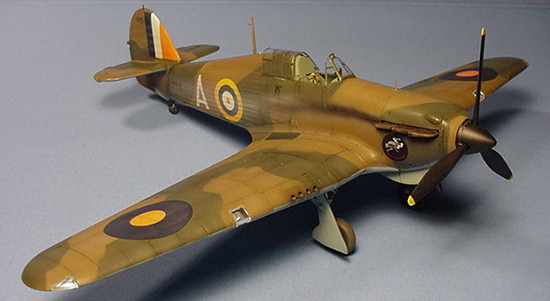 Not content with their days work, the
Hurricanes decided to return to Diredawa the very same afternoon. This time the
enemy was waiting and things went awry. Lt. Harvey’s Hurricane was seen to pull
out of a steep dive, then burst into flames and crash into a building. Jack
Frost, flying Hurricane 280 “W”, was next to be hit by ground fire. With his
engine streaming glycol, covering his windscreen and cockpit hood in a fine
mist, he made an emergency landing at a satellite airfield. Jack immediately
jumped out of his distraught Hurricane and tried to set fire to it. After
failing several times, he ran to seek cover, for in the mean time the
surrounding Italian guns had found a new ground target to pound. Incidentally,
the Italians later tried to set fire to 280 “W” when they evacuated the air
base, but also failed!
Not content with their days work, the
Hurricanes decided to return to Diredawa the very same afternoon. This time the
enemy was waiting and things went awry. Lt. Harvey’s Hurricane was seen to pull
out of a steep dive, then burst into flames and crash into a building. Jack
Frost, flying Hurricane 280 “W”, was next to be hit by ground fire. With his
engine streaming glycol, covering his windscreen and cockpit hood in a fine
mist, he made an emergency landing at a satellite airfield. Jack immediately
jumped out of his distraught Hurricane and tried to set fire to it. After
failing several times, he ran to seek cover, for in the mean time the
surrounding Italian guns had found a new ground target to pound. Incidentally,
the Italians later tried to set fire to 280 “W” when they evacuated the air
base, but also failed!
Back to our story: Clearly Jack was in a tight spot.
Seeing his OC in this predicament, Lt. Bob Kershaw, flying Hurricane 284 “J”, made several dives over the Italian positions in an attempt to drive them away. As this did not seem to have the desired effect, he decided to attempt a rescue.
In his own words” The Italian artillery, however, seemed to object to me landing on their aerodrome, and started firing at me. This unwelcome reception forced me to land sooner than I intended!”
He then carries on with his narrative “After making an approach to land, I noticed a red Very light being fired directly at me by Capt. Frost. One thought went through my head, and I am afraid it was not very complimentary about my commander!”
Kershaw managed to land close top Frost, and together the two, Frost sitting on Kershaw’s lap, took off and flew a very uncomfortable 45 minutes back to base, where to “celebrate” their escape, they polished off the medical orderlies small supply of brandy with relish.
 After a return to South Africa, Frost
subsequently went on to score 15 kills in total, making him the top scoring ace
in the SAAF. Note that several South Africans attained ace status with the RAF,
many with much higher scores, such as “Sailor” Malan and “Pat” Pattle. What has
to be borne in mind when reviewing Jack Frost’s tally is that many SAAF fighter
actions centred on close support or the escort of bombers. In this light, his
score is noteworthy and truly outstanding. Jack was promoted to Major and served
as OC of 5 Squadron flying P-40 Tomahawks in the desert, at that time part of
No. 233 Wing, which flew in support No. 3 Bomber Wing SAAF. On 26 June 1942,
six Tomahawks from 5 Squadron, four from 4 Squadron and two Kittyhawks from 2
Squadron “Flying Cheetahs” set of to escort a group of SAAF bombers. They were
pounced by a number of JG 27 Bf 109F’s, lead by the “Star of Africa”
Hans-Joachim Marseille. Three SAAF pilots were baldly wounded in the battle, but
two from 5 Squadron failed to return back to base: Maj. Jack Frost and Lt.
Denham. Frost’s last command to his group of fighters was for them to regroup in
order to provide an effective cover for the bombers back to base. No wreckage or
remains were ever found. He died a month short of his 24th birthday.
After a return to South Africa, Frost
subsequently went on to score 15 kills in total, making him the top scoring ace
in the SAAF. Note that several South Africans attained ace status with the RAF,
many with much higher scores, such as “Sailor” Malan and “Pat” Pattle. What has
to be borne in mind when reviewing Jack Frost’s tally is that many SAAF fighter
actions centred on close support or the escort of bombers. In this light, his
score is noteworthy and truly outstanding. Jack was promoted to Major and served
as OC of 5 Squadron flying P-40 Tomahawks in the desert, at that time part of
No. 233 Wing, which flew in support No. 3 Bomber Wing SAAF. On 26 June 1942,
six Tomahawks from 5 Squadron, four from 4 Squadron and two Kittyhawks from 2
Squadron “Flying Cheetahs” set of to escort a group of SAAF bombers. They were
pounced by a number of JG 27 Bf 109F’s, lead by the “Star of Africa”
Hans-Joachim Marseille. Three SAAF pilots were baldly wounded in the battle, but
two from 5 Squadron failed to return back to base: Maj. Jack Frost and Lt.
Denham. Frost’s last command to his group of fighters was for them to regroup in
order to provide an effective cover for the bombers back to base. No wreckage or
remains were ever found. He died a month short of his 24th birthday.
| THE KIT |
Enough has been said about the excellent Hasegawa Hurricane family, that I will not repeat it here. Hasegawa was the first manufacturer to take cognisance of the differences between the Mk.I and Mk.II versions of the Hurricane, namely a slightly lengthened cowling for the more powerful Merlin XX in the MK.II, the larger cooler and different wing for cannon based armament. Hasegawa also has the oil deflector ring on the cowling, a feature missing on other kits. The cockpit detail is wonderful, and if there is one gripe, it is that most is all but rendered invisible as it is not possible to pose the Hasegawa canopy in an open position. To me the wheel well detail is sufficient, but resin alternatives are available fro those who constantly look at their models “undersides”.
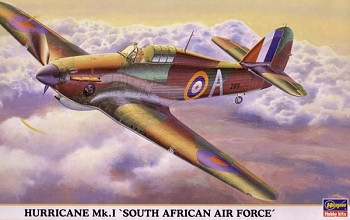 The “South African” version from Hasegawa
comes with markings for Hurricane 289 “A” and Hurricane 285 “V”. The latter is
wrongly labelled as a machine from 1 Squadron SAAF as it clearly also has a 3
Squadron badge on the nose. Hurricane 289 “A” was frequently flown by Jack
Frost, but it unlikely that any pilot had a “personal” machine in the hectic
conditions prevailing in East Africa. Complete markings are provided for 1
model.
The “South African” version from Hasegawa
comes with markings for Hurricane 289 “A” and Hurricane 285 “V”. The latter is
wrongly labelled as a machine from 1 Squadron SAAF as it clearly also has a 3
Squadron badge on the nose. Hurricane 289 “A” was frequently flown by Jack
Frost, but it unlikely that any pilot had a “personal” machine in the hectic
conditions prevailing in East Africa. Complete markings are provided for 1
model.
Although Hasegawa have finally go it right that SAAF aircraft had orange roundels (their Korean F-51 with SAAF markings has erroneous red springboks), the colours chosen for the 3 Squadron badge, depicting a fighting wasp and the motto “Semper Pugnans – always fighting” appear a little odd. Here the wasp is depicted as a silver grey, instead of the usual yellow, and the motto is red, instead of white or yellow. As no colour references exist, it is hard to decide what the correct colours are.
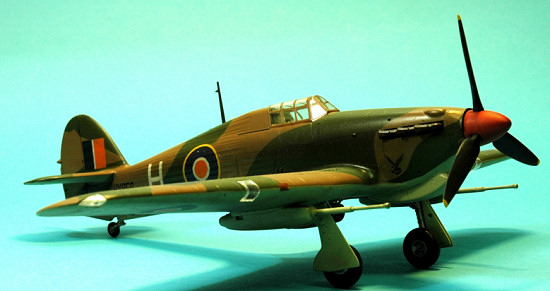 The aircraft code letters are provided in
grey. A standard European camouflage pattern is suggested of sky, dark earth and
dark green. Although it is difficult to judge colours from old black and white
photos (indeed, it can be dangerous to judge colours form old colour photos), it
does appear to us (and perhaps a few other SAAF researchers) that the aircraft
in East Africa were painted with light blue undersides, in combination with a
standard dark earth and dark green pattern on the upper surfaces. The squadron
code is contentious, and appears yellow in certain photos, while possibly grey
in others. Of interest is that Kits at War (printed by Dutch Decals) provides
the codes as either grey or yellow. In their case the 3 squadron badge is close
to that many agree upon, namely a yellow wasp and white motto.
The aircraft code letters are provided in
grey. A standard European camouflage pattern is suggested of sky, dark earth and
dark green. Although it is difficult to judge colours from old black and white
photos (indeed, it can be dangerous to judge colours form old colour photos), it
does appear to us (and perhaps a few other SAAF researchers) that the aircraft
in East Africa were painted with light blue undersides, in combination with a
standard dark earth and dark green pattern on the upper surfaces. The squadron
code is contentious, and appears yellow in certain photos, while possibly grey
in others. Of interest is that Kits at War (printed by Dutch Decals) provides
the codes as either grey or yellow. In their case the 3 squadron badge is close
to that many agree upon, namely a yellow wasp and white motto.
As the dust filters were fitted on as an after thought, a definite colour (or contrast) difference can exist between its colour and that of the rest of the plane. In several cases, it also appears if this area has been painted over a darker colour. This is correctly reflected in the Kits at War sheet, e.g. 280 “W”. As such careful attention should be paid to the references when deciding which particular aircraft to build.
| CONSTRUCTION |
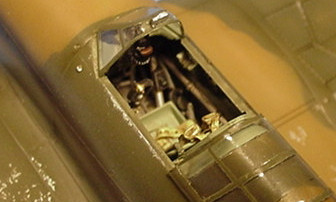 I actually built my model several years ago, using the then
standard Hurricane Mk.I “tropical” version, before the new “SAAF” release from
Hasegawa. After having spent hours painting a cockpit in a previous Hurricane
(the SAAF 11 OUT machine), only to have it disappear under the canopy, I simply
sprayed the interior of this one green, painted the dashboard black, and dry
brushed some of the detail. The only hitch that I found in building this kit,
and other Hasegawa Hurricanes, was to get a “seam free” finish on the tropical
filter. Perhaps it would better to obtain an aftermarket resin item, such as
those from Ron’s resins. Some putty was also needed on the gun port inserts, but
this could be due to my negligence. The insertion of the wing to the bottom of
the fuselage can also leave a small step, which is difficult to fill correctly,
but else these kits really are a joy to build.
I actually built my model several years ago, using the then
standard Hurricane Mk.I “tropical” version, before the new “SAAF” release from
Hasegawa. After having spent hours painting a cockpit in a previous Hurricane
(the SAAF 11 OUT machine), only to have it disappear under the canopy, I simply
sprayed the interior of this one green, painted the dashboard black, and dry
brushed some of the detail. The only hitch that I found in building this kit,
and other Hasegawa Hurricanes, was to get a “seam free” finish on the tropical
filter. Perhaps it would better to obtain an aftermarket resin item, such as
those from Ron’s resins. Some putty was also needed on the gun port inserts, but
this could be due to my negligence. The insertion of the wing to the bottom of
the fuselage can also leave a small step, which is difficult to fill correctly,
but else these kits really are a joy to build.
| COLORS & MARKINGS |
In our research, we decided that the aircraft code was
most likely to be yellow, as it had the same hue as that of the roundel,
especially in photos where the photo (film and filter combination) made the
roundel yellow appear dark. This Hurricane was built in parallel with a Mk IID
(7 Squadron SAAF), and in my rush to get both finished a few errors occurred,
like forgetting to add the gun
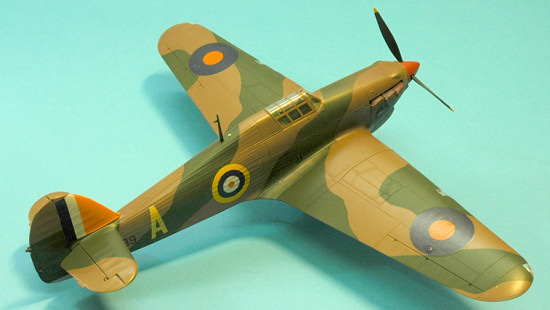 sight before closing the canopy. I also forgot to
paint the filter in a different colour (possibly sky), which just proves that
you can conduct more research than you ever use! Graphics for the squadron badge
were made by Piet and were printed on a small Alps printer, using a white
underlay to ensure sufficient colour density. The code letter was printed in
yellow, again using a white underlay. Unfortunately my Alps only has a density
600 dpi and a very clear dither pattern, which does not permit close inspection.
However, in the display cabinet it looks OK. I used Gunze RLM 65 to approximate
the light blue used and Gunze dark earth and dark green for the upper surfaces.
Several light coats of Future were used prior to application of the decals.
Here I used the kit decals. The rudder marking was masked and sprayed the orange
parts with an airbrush. The roundels on the upper wing surfaces came from a
generic SAAF sheet, those on the lower surfaces cam from a Kits at War sheet
(the SAAF Hurricane sheet had not been released yet), and the centres of the
roundels on the fuselage were hand painted.
sight before closing the canopy. I also forgot to
paint the filter in a different colour (possibly sky), which just proves that
you can conduct more research than you ever use! Graphics for the squadron badge
were made by Piet and were printed on a small Alps printer, using a white
underlay to ensure sufficient colour density. The code letter was printed in
yellow, again using a white underlay. Unfortunately my Alps only has a density
600 dpi and a very clear dither pattern, which does not permit close inspection.
However, in the display cabinet it looks OK. I used Gunze RLM 65 to approximate
the light blue used and Gunze dark earth and dark green for the upper surfaces.
Several light coats of Future were used prior to application of the decals.
Here I used the kit decals. The rudder marking was masked and sprayed the orange
parts with an airbrush. The roundels on the upper wing surfaces came from a
generic SAAF sheet, those on the lower surfaces cam from a Kits at War sheet
(the SAAF Hurricane sheet had not been released yet), and the centres of the
roundels on the fuselage were hand painted.
| CONCLUSIONS |
I had been itching to build a model of this aircraft ever since I got hold of a copy of Hermann Potgieter’s “Aircraft of the South African Air Force” book in 1980. More than 20 years later I could finally realise this dream. Am I happy with the result? Not really. This model was built in a bit of a rush, and to me just does not really capture that which I saw in my mind’s eye. Time to think of an alternative plan of action!
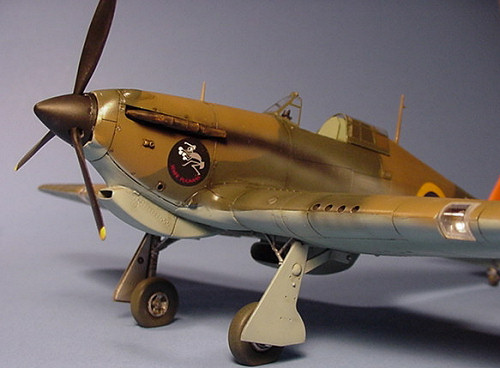 Plan
B: As it was clear that I was not going to rebuild a satisfactory version of
this aircraft in the next few months, I resorted to plan B, in that I gently
coaxed Erik Whipple into building the newly released Hasegawa kit. Erik is a far
more proficient builder than I ever will be, and I was curious to see what his
rendition of this model would look like. Erik was not happy with a number of the
kit components and exchanged these for Ultracast wheels, wheel well, cockpit
armor, seat and exhausts. He also used Squadron Vac canopy and the nicely
detailed Cutting Edge gunsight. Erik used the kit decals, and these appeared to
have worked very well.
Plan
B: As it was clear that I was not going to rebuild a satisfactory version of
this aircraft in the next few months, I resorted to plan B, in that I gently
coaxed Erik Whipple into building the newly released Hasegawa kit. Erik is a far
more proficient builder than I ever will be, and I was curious to see what his
rendition of this model would look like. Erik was not happy with a number of the
kit components and exchanged these for Ultracast wheels, wheel well, cockpit
armor, seat and exhausts. He also used Squadron Vac canopy and the nicely
detailed Cutting Edge gunsight. Erik used the kit decals, and these appeared to
have worked very well.
Final appraisal: Hasegawa and decal manufacturers such as Kits at War /Dutch Decals are to be thanked for releasing a kit and markings for this neglected piece of WW2 history. These releases are of great help to modellers with an interest in the SAAF and the forgotten “War of a Hundred Days”.
Maybe in the next 20 years I’ll be able to build a model closer to my ideal, especially as I now have the official “Hasegawa release” in my stash, a spare Kits at War decal sheet, and some home grown graphics that I feel represent the Squadron badge more correctly. In the interim I can cherish the work of Erik, which is a lot closer to the vision I had, and hope that other talented modellers will be attracted to this topic and do the SAAF and the Hurricanes they used a bit more justice.
Thanks: To Piet and Erik for making this tri-continental collaboration such fun. Long live the web!
| REFERENCES |
Springbok Fighter Victory, SAAF Fighter Operations 1939-1945. Volume 1, East Africa, 1940-1941. Michael Schoeman. African Aviation Series Volume 11.
Squadrons of the South African Airforce and their Aircraft 1920-2005. Steven MacLean.
The War of a Hundred Days. Springboks in Somalia and Abyssinia 1940-40. Steven Ambrose Brown. Ashanti Publishing.
The Hawker Hurricane, a comprehensive guide for the modeller. Richard A. Franks. SAM Publications.
South African Colours and Markings. Number 1, Volume 1 Piet van Schalkwyk and William Marshall.
The South African Military History Society. Military History Journal Vol.1 No. 6.
South African Air Aces of WW2. No. 6. Maj. JE. Frost, DFC and Bar by Squadron leader D.P.Tidy.
February 2006
If you would like your product reviewed fairly and quickly by a site that has over 300,000 visitors a month, please contact me or see other details in the Note to Contributors.